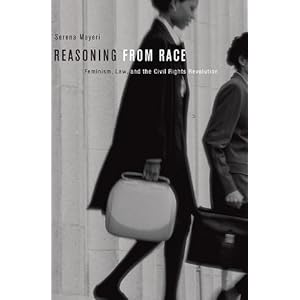 Anyone interested in feminist jurisprudence or rights discourse will want to read this new book by Serena Mayeri (Penn): Reasoning from Race Feminism, Law, and the Civil Rights Revolution. The publisher’s description is here.
Anyone interested in feminist jurisprudence or rights discourse will want to read this new book by Serena Mayeri (Penn): Reasoning from Race Feminism, Law, and the Civil Rights Revolution. The publisher’s description is here.
Mayeri uncovers the history of an often misunderstood connection at the heart of American antidiscrimination law. Her study details how a tumultuous political and legal climate transformed the links between race and sex equality, civil rights and feminism. Battles over employment discrimination, school segregation, reproductive freedom, affirmative action, and constitutional change reveal the promise and peril of reasoning from race—and offer a vivid picture of Pauli Murray, Ruth Bader Ginsburg, and others who defined feminists’ agenda.
Looking beneath the surface of Supreme Court opinions to the deliberations of feminist advocates, their opponents, and the legal decision makers who heard—or chose not to hear—their claims, Reasoning from Race showcases previously hidden struggles that continue to shape the scope and meaning of equality under the law.
That description is a bit too modest, in my view. Mayeri pulls back the layers of the complicated story behind constitutional litigation and looks at how advocates for sex equality borrowed from Civil Rights-era ideas and discourse to advance women’s claims. This work is nothing short of spectacular.
-Bridget Crawford


I look forward to reading this book. Justice Ginsburg has often acknowledged her deep indebtedness to both Pauli Murray and Dorothy Kenyon. When she wrote the brief in Reed, Ginsburg placed both their names on the cover as co-authors with her. Neither Murray nor Kenyon actually worked on the brief; but Ginsburg believed that her legal argument was based in part on the work they had done. Later at Rutgers, Ginsburg used Pauli Murray’s article “Jane Crow and the Law” as the basis for developing her syllabus for the first course (or one of the first) in sex-discrimination. I look forward to reading a more in-depth connection in this book.